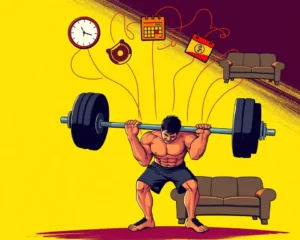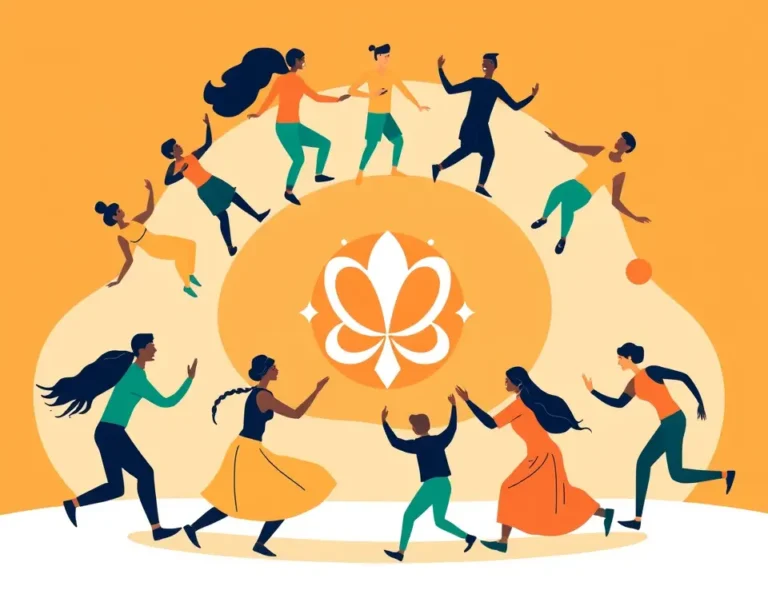A groundbreaking study in Chennai, India, reveals how a novel HIIT dance routine is helping adolescent girls combat obesity and improve their overall health. This innovative approach, known as THANDAV, offers valuable lessons in preventive healthcare and highlights the importance of culturally tailored interventions.
The Growing Concern of Adolescent Obesity
Adolescent obesity is a significant global health challenge, particularly in lower-middle-income countries like India. Several factors contribute to this issue, including:
- Sedentary lifestyles: Increased academic pressure, reduced outdoor activities, and excessive screen time contribute to a lack of physical activity.
- Unhealthy diets: Easy access to junk food and sugary beverages leads to poor nutrition.
- Socioeconomic factors: Cost and availability of healthy foods can be a barrier for families.
- Lack of awareness: Limited knowledge about healthy eating and the importance of exercise.
Obesity in adolescence can lead to numerous health problems, including:
- Cardiovascular diseases: High blood pressure, high cholesterol, and increased risk of heart attacks and strokes.
- Type 2 diabetes: Insulin resistance and elevated blood sugar levels.
- Asthma: Increased airway inflammation and breathing difficulties.
- Mental health issues: Anxiety, depression, and low self-esteem.
- Increased risk of adult obesity: Obese adolescents are more likely to become obese adults.
THANDAV: A Culturally Tailored Solution
To address the rising rates of physical inactivity and associated health concerns among adolescent girls in Chennai, a research team led by Dr. Ranjith Anjana Mohan of the Madras Diabetes Research Foundation (MDRF) developed THANDAV (Taking High-Intensity Interval Training [HIIT] And Dance to Adolescents for Victory over Non-communicable Diseases [NCDs]).
What is THANDAV?
THANDAV is a 10-minute HIIT-based dance routine that incorporates:
- High-Intensity Interval Training (HIIT): Short bursts of intense activity followed by brief recovery periods.
- Culturally relevant dance moves: Choreography set to popular Indian film music, regional/folk songs, and Western music favored by South Asian adolescents.
- Simple and repetitive movements: Easy-to-follow steps that can be done in a loop without much stress.
Each THANDAV session consists of four loops performed to four hit tracks, including two minutes of high-energy moves (80-90% heart rate) followed by 30 seconds of low cooldown moves (50-60% heart rate).
The Science Behind THANDAV
A study published in the Journal of Diabetes Science and Technology on April 21, 2025, evaluated the effectiveness of THANDAV in improving cardiovascular risk factors and lifestyle behaviors among Asian Indian adolescent girls.
The 12-week pilot cluster randomized controlled trial (cRCT) involved 108 schoolgirls aged 13 to 15 years from two schools in Chennai, India. One school participated in the THANDAV intervention, while the other served as a control group.
The primary outcome measured was step count, while secondary outcomes included metabolic, clinical, and lifestyle parameters. Focus group discussions and interviews were also conducted to assess the acceptability and barriers to the THANDAV intervention.
Key Findings
The study revealed significant improvements in the intervention group compared to the control group:
- Increased physical activity:
- +1073 steps/day
- +29.5 minutes of moderate-to-vigorous physical activity
- Improved body composition:
- +0.9 kg skeletal muscle mass
- -0.7 kg body weight
- -2.0% body fat percentage
- -0.3 kg/m² body mass index
- -1.0 cm waist circumference
- -1.7 kg body fat mass
- Enhanced cardiovascular health:
- -4 mm Hg systolic blood pressure
- -4 mm Hg diastolic blood pressure
- -3 bpm resting heart rate
- Positive lifestyle changes:
- +46.4 minutes of sleep
- -199.7 minutes of sedentary time
- -6.6 Adolescence Stress Scale score
- -2.7 junk food consumption score
Qualitative interviews highlighted that THANDAV routines were time-efficient, enjoyable, and easily integrated into the adolescents’ busy schedules, making it a feasible and engaging leisure-time activity. Participants also reported weight loss, increased stamina, and improved agility within just two to three months. During THANDAV sessions, girls achieved almost 80% of their maximum heart rate, which helps the body move oxygen and blood to the muscles more efficiently, burning more calories, lowering cholesterol, and improving cardiovascular fitness.
Lessons in Preventive Health
The THANDAV study offers several valuable lessons in preventive health, particularly for addressing adolescent obesity and promoting overall well-being:
1. Culturally Tailored Interventions are Crucial
THANDAV’s success lies in its cultural relevance. By incorporating popular Indian music and dance moves, the program resonates with the target audience, making it more appealing and sustainable. This highlights the importance of tailoring interventions to specific cultural contexts to ensure maximum engagement and effectiveness.
2. Short Bursts of Exercise Can Have a Profound Impact
The 10-minute duration of THANDAV addresses a common barrier to exercise: lack of time. The study demonstrates that even short bursts of HIIT can significantly improve physical activity levels, cardiovascular health, and overall well-being. This is particularly relevant for adolescents who are often bogged down by studies and other commitments.
3. Fun and Enjoyment are Key to Sustainability
THANDAV is designed to be fun and enjoyable, making it more likely that participants will stick with the program long-term. When fitness becomes entertainment, it’s easier to sustain physical activity without it feeling like an imposition. The positive feedback from the girls, with many expressing eagerness to continue the program, underscores the importance of making exercise enjoyable.
4. School-Based Interventions are Effective
Delivering THANDAV within the school setting ensures that it reaches a large number of adolescents and integrates seamlessly into their daily routine. This approach removes barriers such as transportation and parental supervision, making it easier for girls to participate. The study provides a replicable template that could inform future school-based interventions, particularly in countries with similar cultural and socioeconomic profiles. Integrating THANDAV into school timetables without disrupting academic priorities enhances its feasibility.
5. Addressing Lifestyle Behaviors is Essential
In addition to improving physical health, THANDAV also promotes positive behavioral changes. Participants showed reductions in sedentary time and junk food consumption, while also reporting increased sleep duration. These changes are crucial for long-term health and well-being.
6. HIIT Improves Academic Performance
HIIT exercises for teens can improve academic performance when properly implemented into their school routine. Benefits include reduced risk of chronic diseases, body fat percentage, insulin resistance, and cholesterol levels, along with improved joint function and flexibility, and increased speed and power output during athletic pursuits. HIIT routines can improve these biomarkers far better than other forms of exercise for children and adolescents.
Implications for Public Health
The THANDAV study has significant implications for public health, particularly in the context of preventing and managing adolescent obesity and related non-communicable diseases (NCDs). The program offers a promising solution to combat the growing health challenges associated with childhood obesity and diabetes in India.
Recommendations
Based on the findings of the THANDAV study, the following recommendations can be made:
- Implement THANDAV in schools: Integrate THANDAV into school timetables as a mandatory physical activity for adolescent girls.
- Promote THANDAV in communities: Offer THANDAV classes in community centers and recreational facilities.
- Develop culturally tailored interventions: Create similar programs that incorporate local music, dance, and cultural traditions.
- Educate adolescents on healthy lifestyles: Conduct workshops and awareness campaigns on healthy eating, physical activity, and the risks of obesity.
- Involve families: Encourage families to participate in healthy lifestyle changes together.
- Advocate for policy changes: Implement policies that promote healthy eating and physical activity in schools and communities.
Preventing and Treating Adolescent Obesity
The Society for Adolescent Health and Medicine provides recommendations for preventing and screening for obesity. Weight gain that crosses BMI percentiles is particularly concerning, and new-onset obesity in adolescence suggests opportunities for prevention. Health care providers should assess eating behaviors, physical activity, sedentary and screen time, and family history to determine health risk and reinforce healthy behaviors.
Prevention Strategies
- Promote healthy eating: Encourage consumption of fruits, vegetables, and whole grains. Limit sugary drinks, processed foods, and unhealthy fats.
- Encourage physical activity: Aim for at least 60 minutes of moderate-to-vigorous physical activity daily.
- Reduce screen time: Limit screen time to less than two hours per day.
- Create supportive environments: Promote healthy eating and physical activity in homes, schools, and communities.
- Role modeling: Parents who eat healthy foods and participate in physical activity set an example, so a child is more likely to do the same.
Treatment Options
- Lifestyle interventions: Focus on improving eating habits, increasing physical activity, and reducing sedentary behavior.
- Counseling: Provide guidance and support to adolescents and their families.
- Medications: Orlistat is approved for adolescents 12 and older for weight loss.
- Surgery: Bariatric surgery may be considered for severely obese adolescents.
The Future of Preventive Health
The THANDAV study demonstrates the potential of innovative, culturally tailored interventions to address adolescent obesity and promote overall health. By incorporating elements of fun, enjoyment, and cultural relevance, these programs can effectively engage adolescents and empower them to make positive lifestyle changes. As we move forward, it is crucial to prioritize preventive health strategies that address the root causes of obesity and create supportive environments for healthy living. This requires a collaborative effort involving schools, families, communities, and policymakers. By working together, we can create a healthier future for our adolescents and generations to come.







